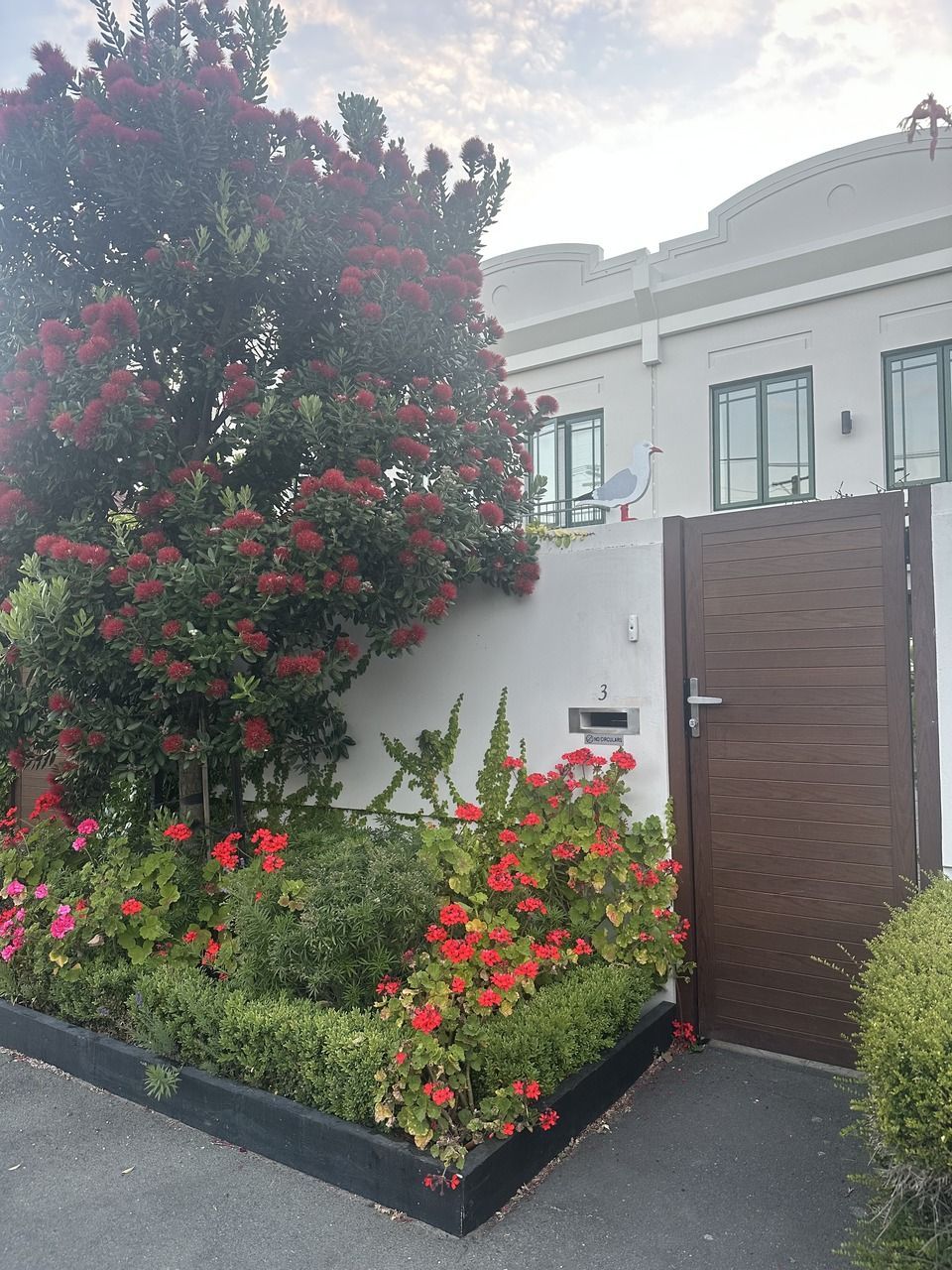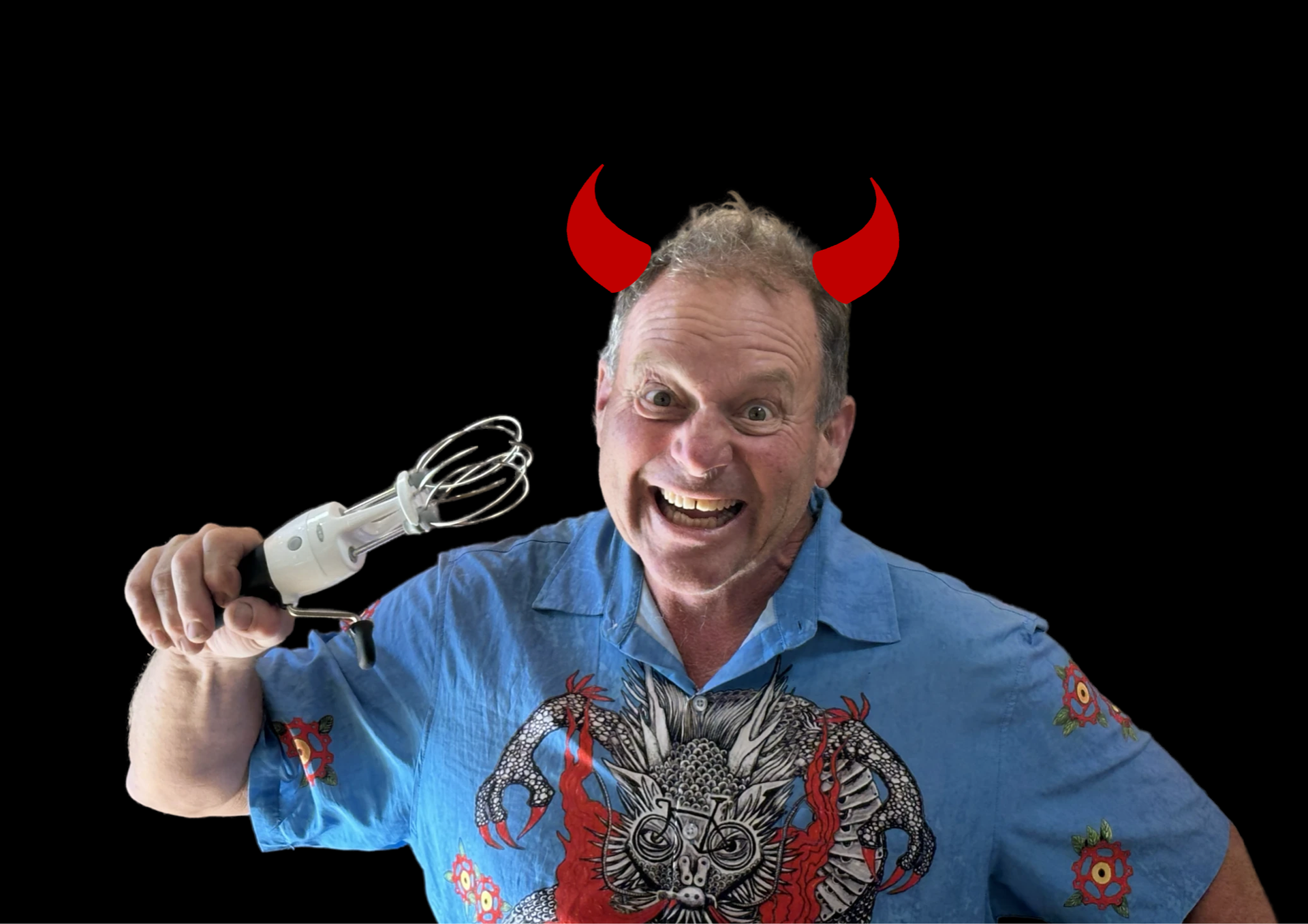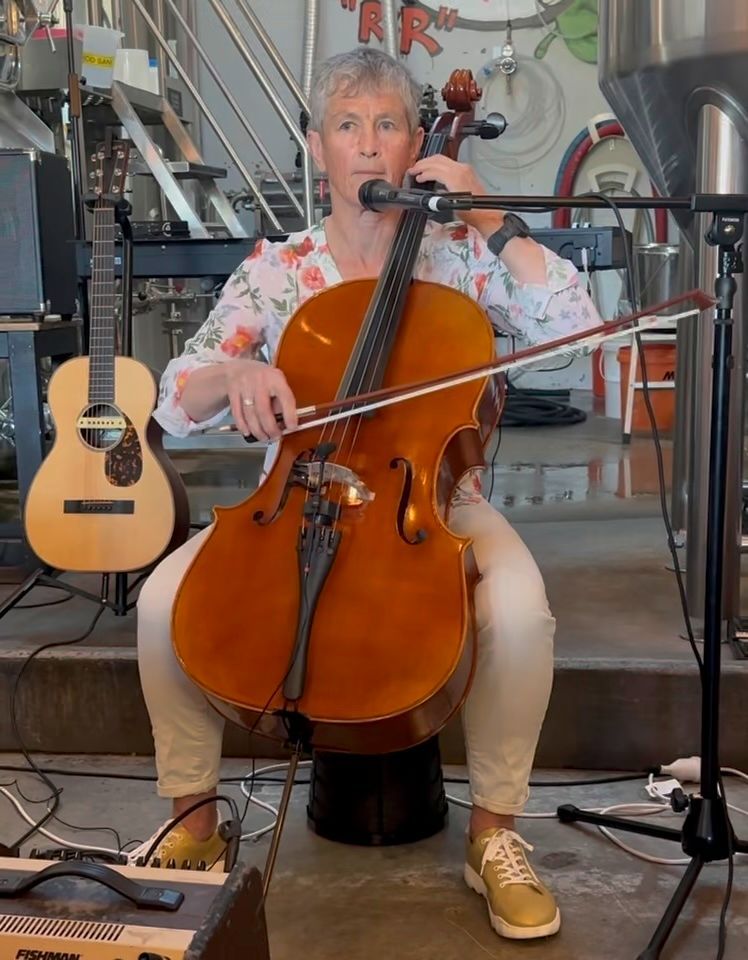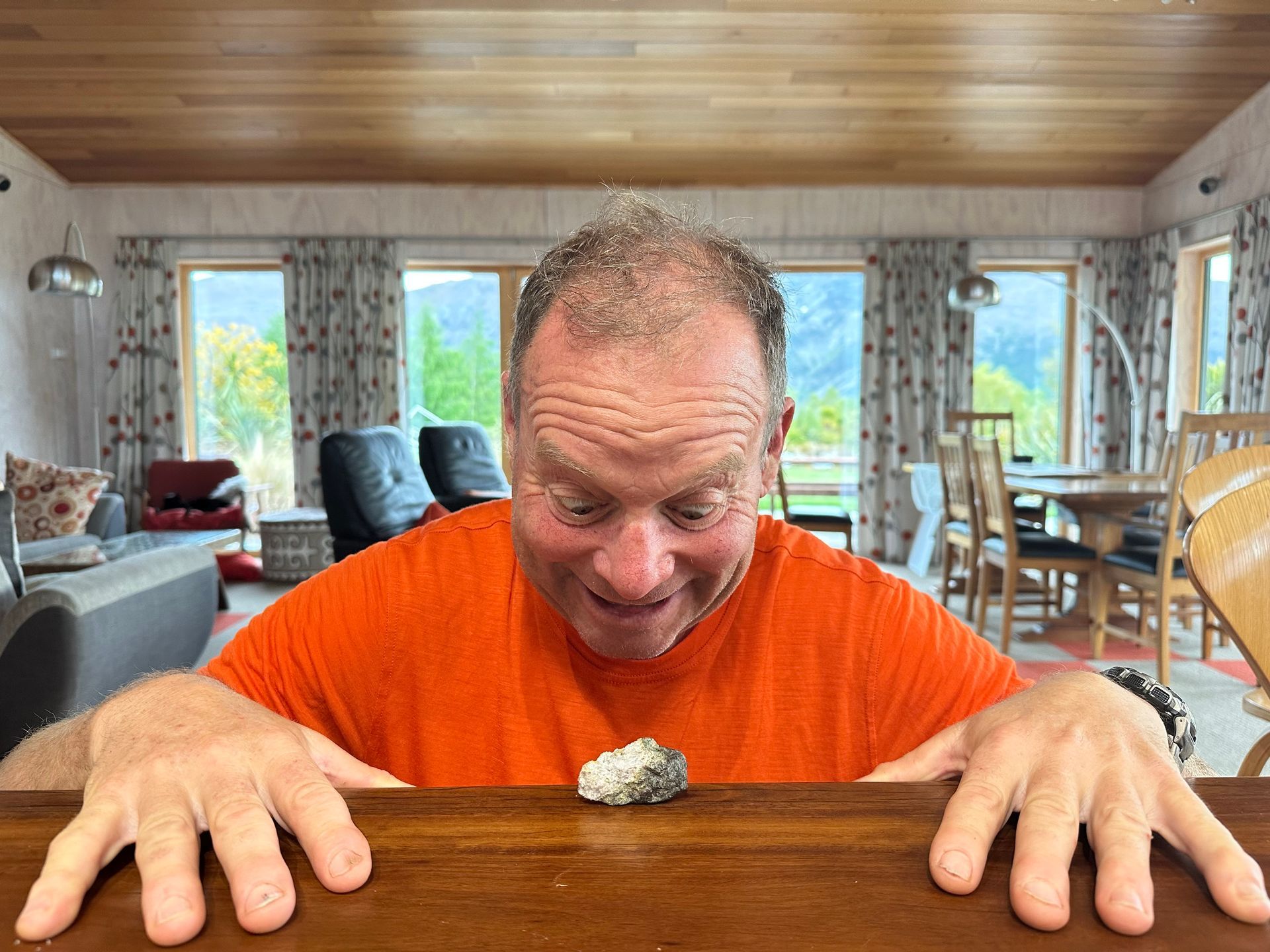Monuments and Meanings
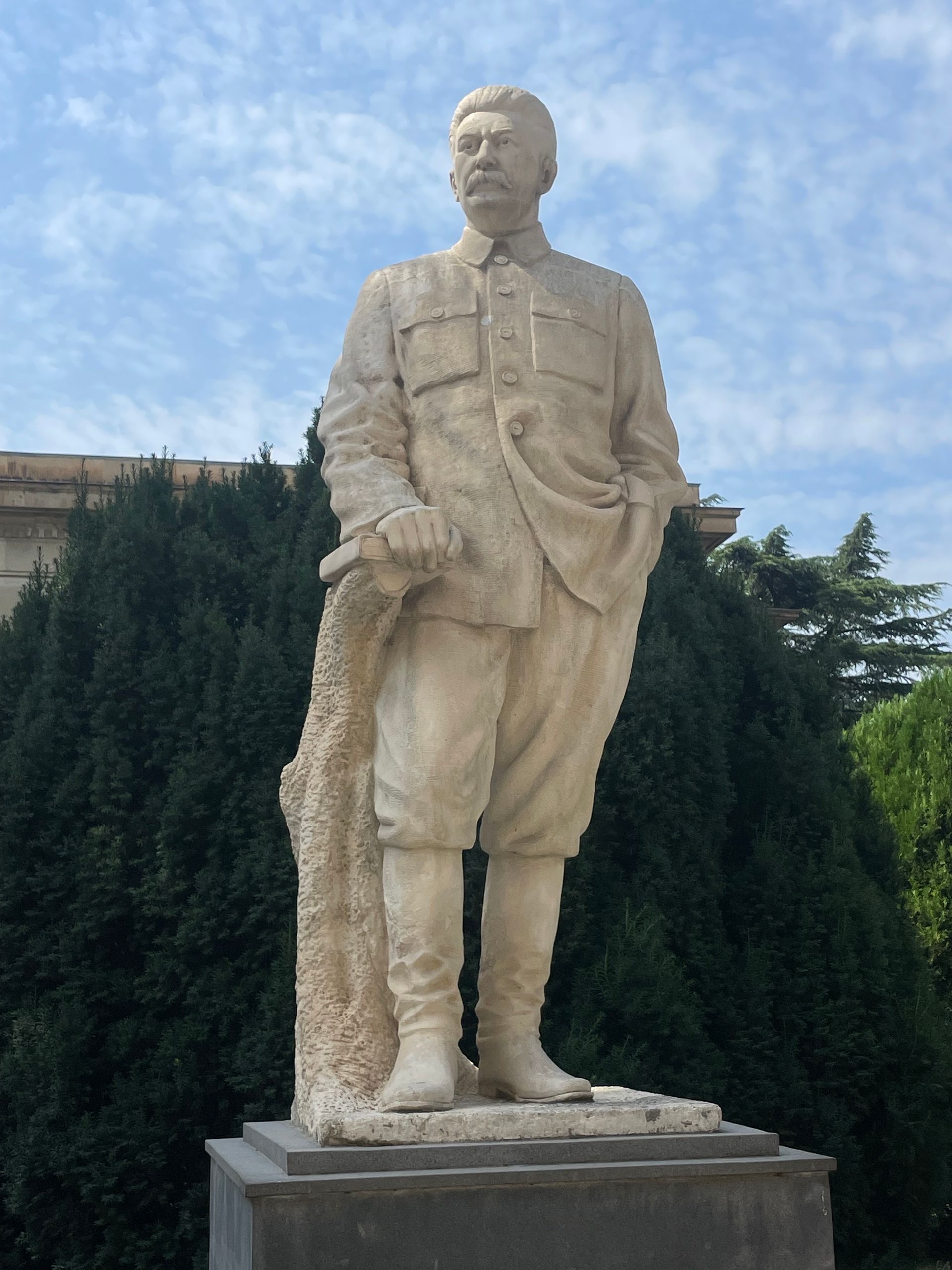
We spent the day in Gori, a Georgian provincial capital. We hid from the sun which has cooked us over the last four days of riding. Out of the shade it feels like you are riding in an oven with no door to open; the cooler air under even the smallest tree yells that we should be planting more trees, not cutting them down to make wider roads.
Gori is famous for being the birthplace of Joseph Stalin. There’s a museum in Gori dedicated to Stalin. It includes are two large and ornate buildings of Gori sandstone blocks. In the larger building are multiple rooms full of exhibits – items actually, or allegedly, owned by, used by or related to Stalin. The exhibits include office furniture, personal effects and gifts made to Stalin. There are also documents, photographs, paintings and newspaper articles about Stalin. There is even one of twelve copies of Stalin’s death mask. The death mask is odd in that Stalin’s face, depicted everywhere as very square with a large jaw, looks small and more pointed. Death might not be the best time to have your picture taken, as it were.
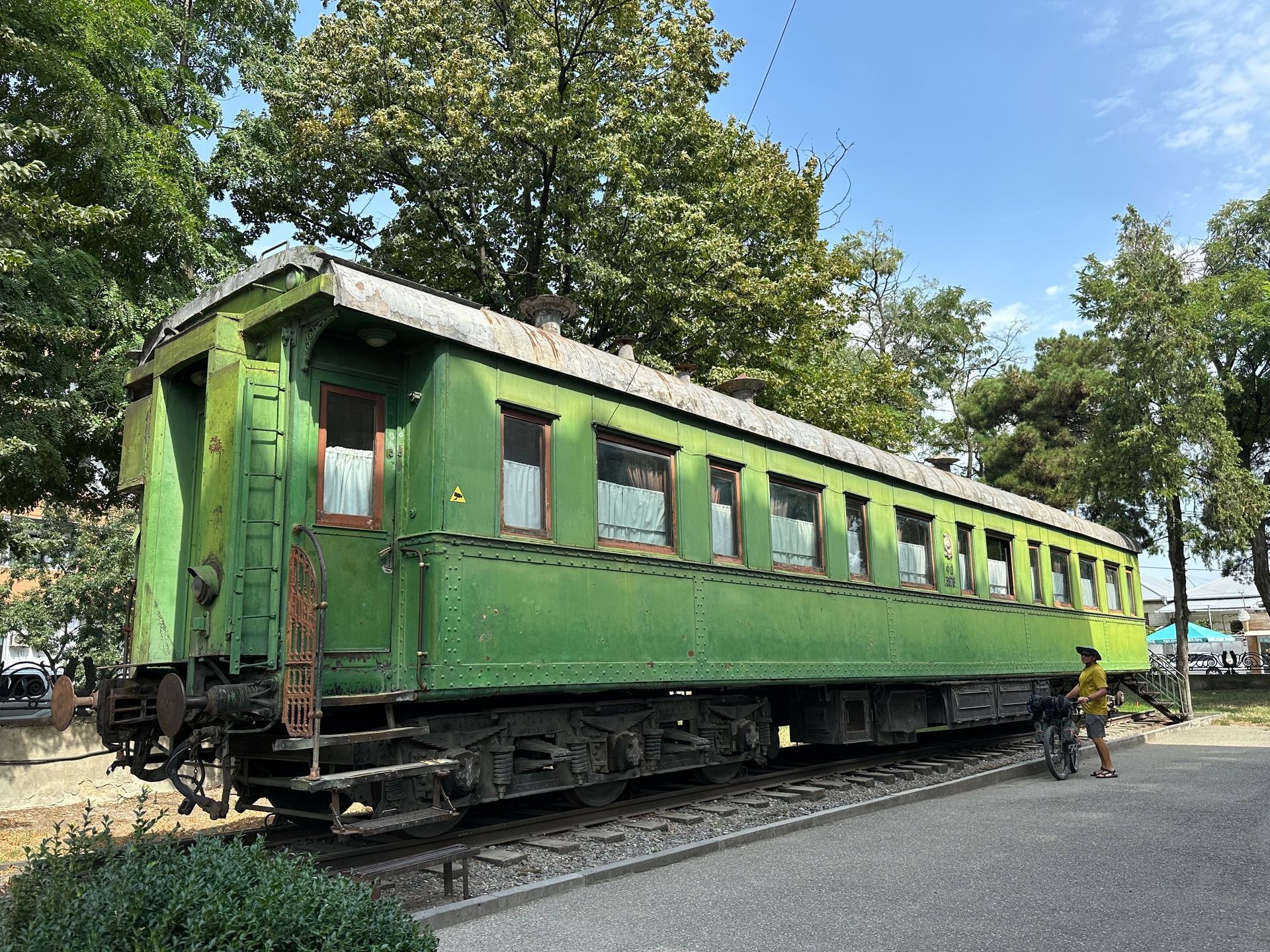
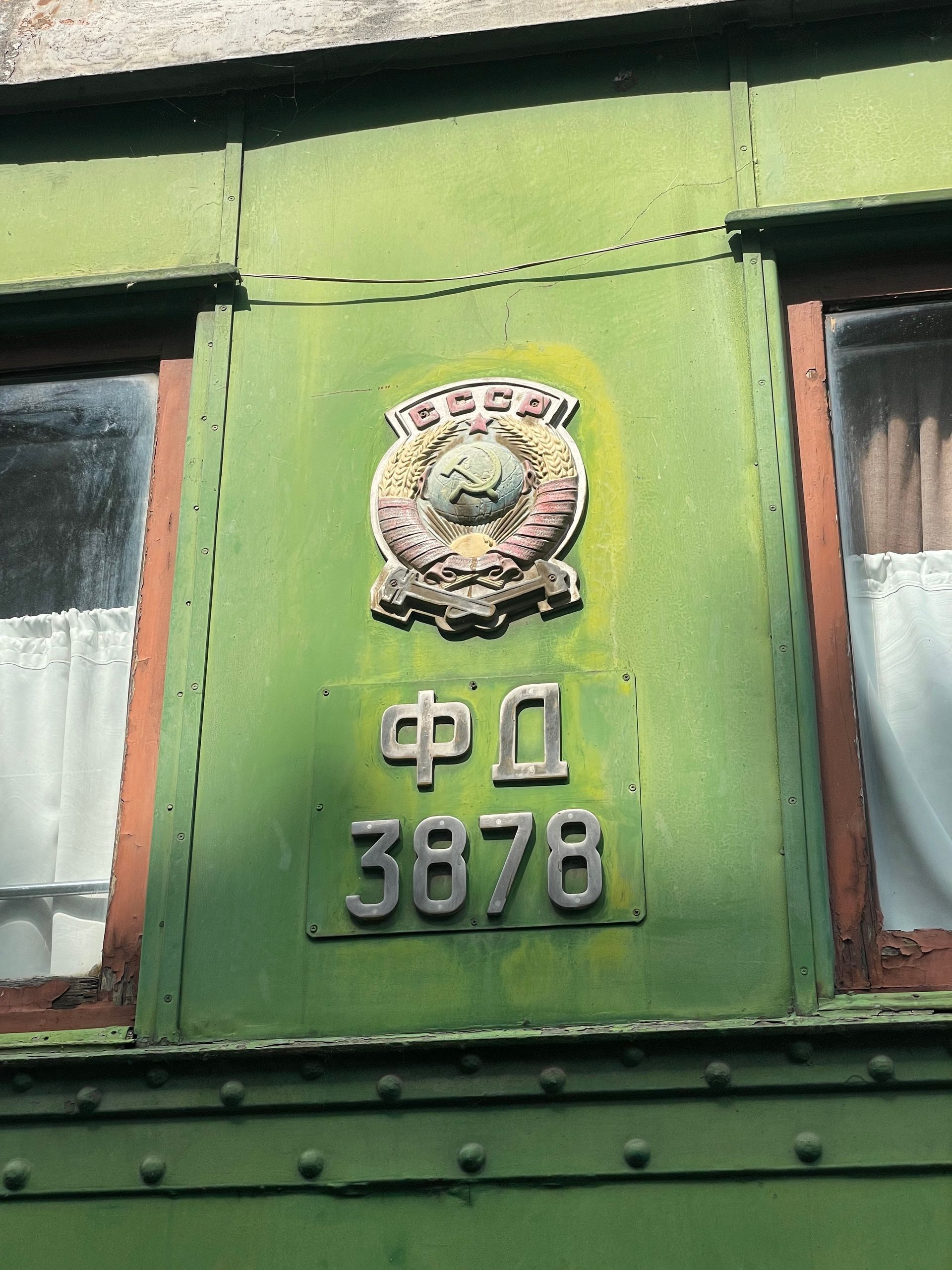
Stalin's railway carriage
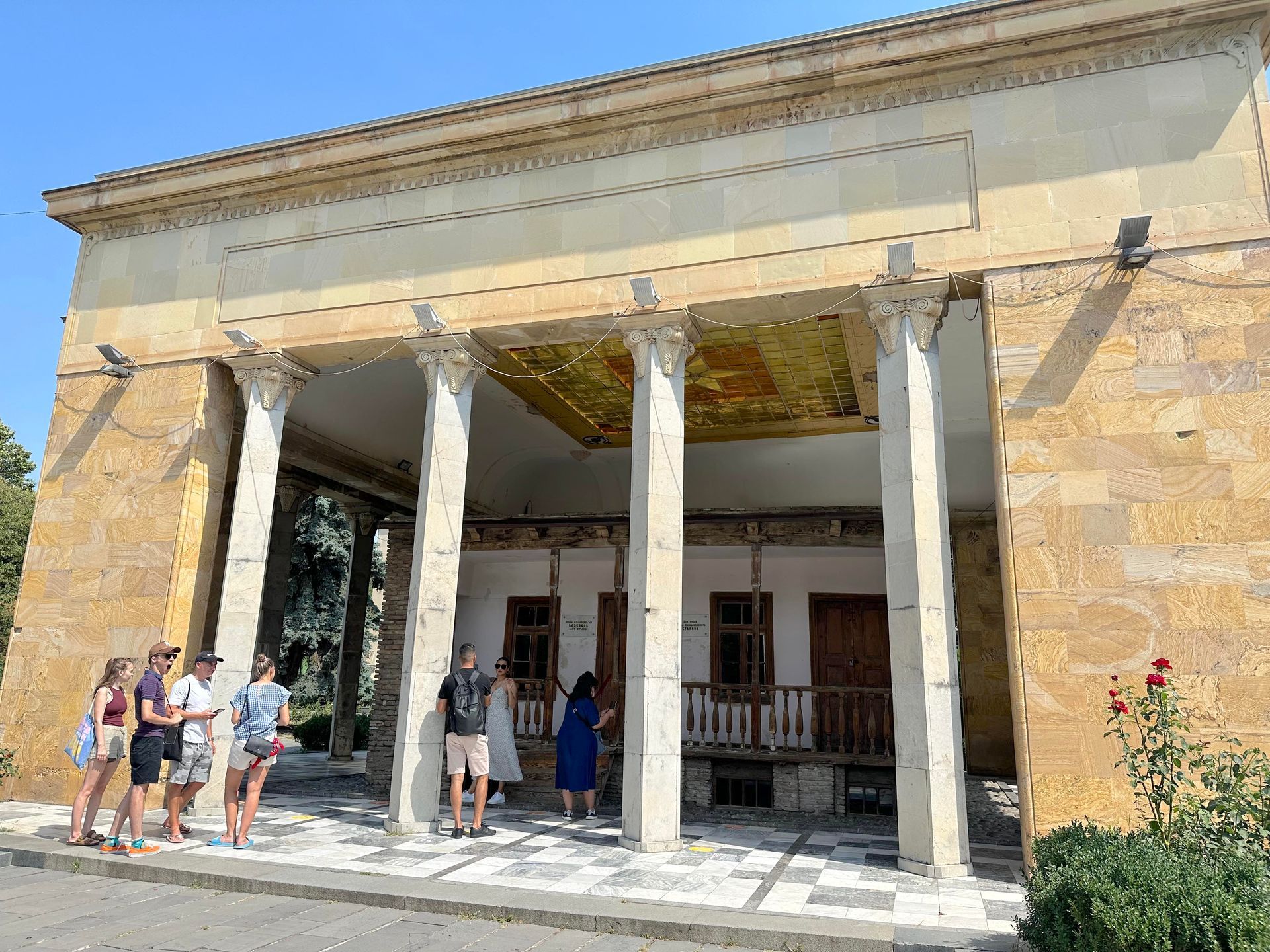
The home in which Stalin had his early childhood - his cobbler father became abusive so his mother left home with Stalin
The second building encloses a small wood and mud-brick house in which Stalin grew up. The house was once part of a community of such dwellings. However, the rest of the houses were knocked down in order to make way for the memorial structures and a park. Too bad for the people who lived in the community.
The nature of the Stalin Museum is debated. There is no commentary in the museum on the wrongs wrought upon people and places as a result of Stalin’s philosophies and regime. The removal of the houses for a memorial is a small representation of Stalin’s impacts. Khrushchev, who became Premier following Stalin’s death from a stroke, decried Stalin’s ‘cult of personality’ which ‘peverted party principles’. However, in general in the museum there is not much commentary at all! It’s really just an archive of items.
The Stalin museum definitely follows that ‘cult of personality’, being more like a shrine to a saint than an attempt at an accurate representation of a highly controversial character. It’s even a shrine to a saint the origin of whose name is unclear. Stalin was born Ioseb Besarionis dze Jughashvili but died Joseph Vissarionovich Stalin. He started calling himself ‘Stalin’ in 1912 – nicknames were commonly used and Stalin was trying to evade the police so used many different nicknames. During his life no-one other than the ‘Institute of Marxism-Leninism’ could question anything about Stalin and after his death the backlash against his cult of personality meant no-one could research anything about him either. There are multiple hypotheses about Stalin’s name but no consensus.
The Stalin museum is controversial in Georgia – there’s long been much anti-Russian sentiment and that is even more the case today given the fear of Georgians that Russia may invade them, based on the Ukraine invasion. Further, a hundred thousand or more Russians have moved to Georgia since the Ukraine war started (Russians do not need a visa to come to Georgia). This influx is causing stress, including simply because of the number of people coming to a small country of 3.7 million inhabitants.
After the 2008 South Ossetia war (South Ossetia is part of Georgia close to Gori which behaves as a separate entity), Georgia's then Minister of Culture announced the Stalin museum would be reorganised into the Museum of Russian Aggression. A banner was placed at the entrance stating: "This museum is a falsification of history. It is a typical example of Soviet propaganda and attempts to legitimise the bloodiest regime in history." In December 2012, the municipal assembly of Gori voted to end to plans to change the museum's content; no change has taken place and the banner was removed. A six metre statue in Gori’s central square was removed in June 2010, with plans to place it in the museum while a statue memorialising victims of totalitarian regime and of the Gori war would replace it; no replacement has been erected and it’s not clear where the original went.
Memorials, and museums, are important influences of culture and thought into the future, beyond being statements of culture and thought at a particular time. One concept of museums comes from churches collecting human remains and possessions from saints, with the intent that people could touch these objects and acquire a degree of saintliness for themselves. Might one acquire a touch of Stalinism from viewing his prior possessions?
Related, there are international movements to take down monuments and revise displays that memorialise principles and behaviours we no longer ascribe to. Then there are counter movements by people who like the embodied principles and behaviours and by people who see monuments as having multiple sides – they provide a memorial of poor behaviours as much as they do of revered behaviours. The meaning of monuments or museums for many visitors is largely in the interpretation provided, given they often come to them with little background.
I think there will always be a problem with monuments of individual people, in that people are seen as pinnacles but are as much a product of their society. We use statues of individuals to memorialise both people and concepts but place far too much emphasis on the individual. I had a mental rethink years ago after reading Stephen Fry’s “Making History”, where scientists and time travellers combine to prevent Adolf Hitler being born. The fictional result was that much of the world becomes fascist because a much more effective leader than Hitler came to power! Of course, it is just fiction. However, if people are seeking a ‘strong man’ to lead them in times of uncertainty, the specific individual is less important than the fear of the masses who, in a democracy at least, select that individual. I thought about “Making History” every time people wished for something untoward to happen to President Trump. Was Trump himself the problem? Or was the fact that tens of millions of people voted for Trump the problem?
When we remove a monument without a replacement or a record, we lose our memory of how we changed. When we revise the history told in a monument or museum, we need to be careful to document the nature of and reason for the revision, or we become as set in our present ideas as the installers of the display were in their time. History, and narrative, are fluid not fixed. However, monuments and museums are designed to be more fixed than fluid.
The Soviet Past Research Laboratory (SovLab) is a Georgian NGO with a goal of analysing the Soviet totalitarian past and creating an environment in which to reflect, debate and interrogate the meaning of remembrance. SovLab’s view of the Gori Stalin Museum is that it should be kept as is – a museum of Stalin cult. They consider another layer of interpretation should be added – making visible what has been hidden or ignored in the current exhibitions. It’s an interesting concept, having exhibitions that tie from the past to the present with the history of thought about those exhibitions running forward alongside the fixed items. Digital interpretation offers one way to achieve this, however digital interpretation is by nature ephemeral and easily changed without trace. Not to mention that people’s attention spans are relative short (and becoming shorter!), so how many layers of interpretation they will read is questionable. In the meantime, the Gori Stalin Museum will continue to attract swathes of visitors, whatever the reasons for which they come.
Vladimir Lenin, Joseph Stalin, Nikita Khrushchev, Leonid Brezhnev, Mikhail Gorbachev and Boris Yeltsin are all travelling together in a railway carriage. Unexpectedly, the train stops. Lenin suggests: "Perhaps we should announce a subbotnik, so that workers and peasants will fix the problem."
Stalin puts his head out of the window and shouts, "If the train does not start moving, the driver will be shot!" (alluding to the Great Purge). But the train doesn't start moving.
Khrushchev then shouts, "Let's take the rails from behind the train and use them to lay the tracks in front" (alluding to Khrushchev's various reorganisations). But still the train doesn't move.
Then Brezhnev says, "Comrades, Comrades, let's draw the curtains, turn on the gramophone and pretend we're moving!" (alluding to the Brezhnev stagnation period). The train remains in place.
Gorbachev says, "We were going the wrong way anyway!" He changes the train's direction (alluding to his policies of glasnost and perestroika).
Finally, Boris Yeltsin drives the train off the rails and through a field (allusion to the breakup of the Soviet Union).
HAS VLADIMIR PUTIN REINSTATED THE LARGEST CARRIAGE ON THE TRACKS AND EXPANDED IT, TO THEN FIRE ON AND EXPLODE THE TRACKS IN FRONT OF THE TRAIN?
